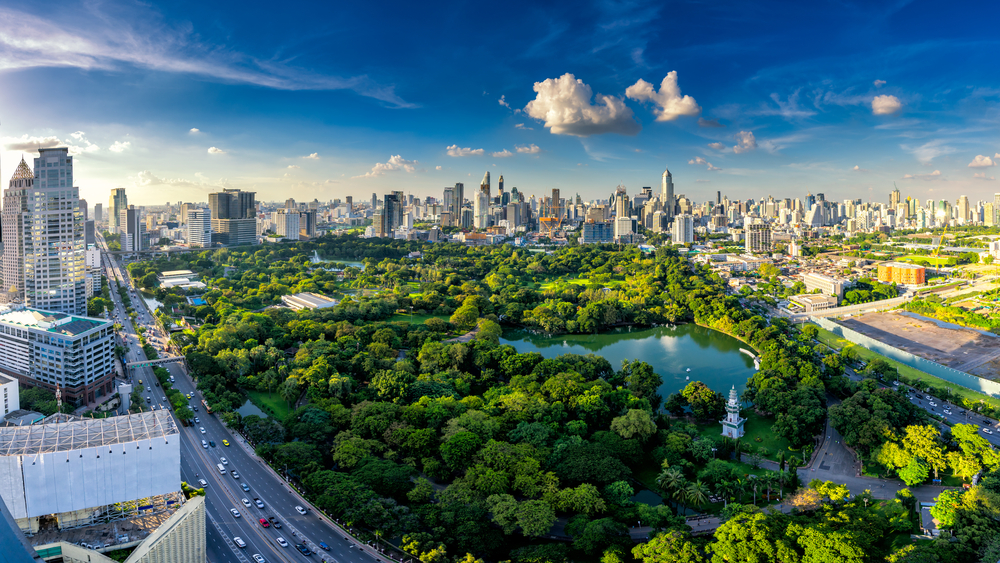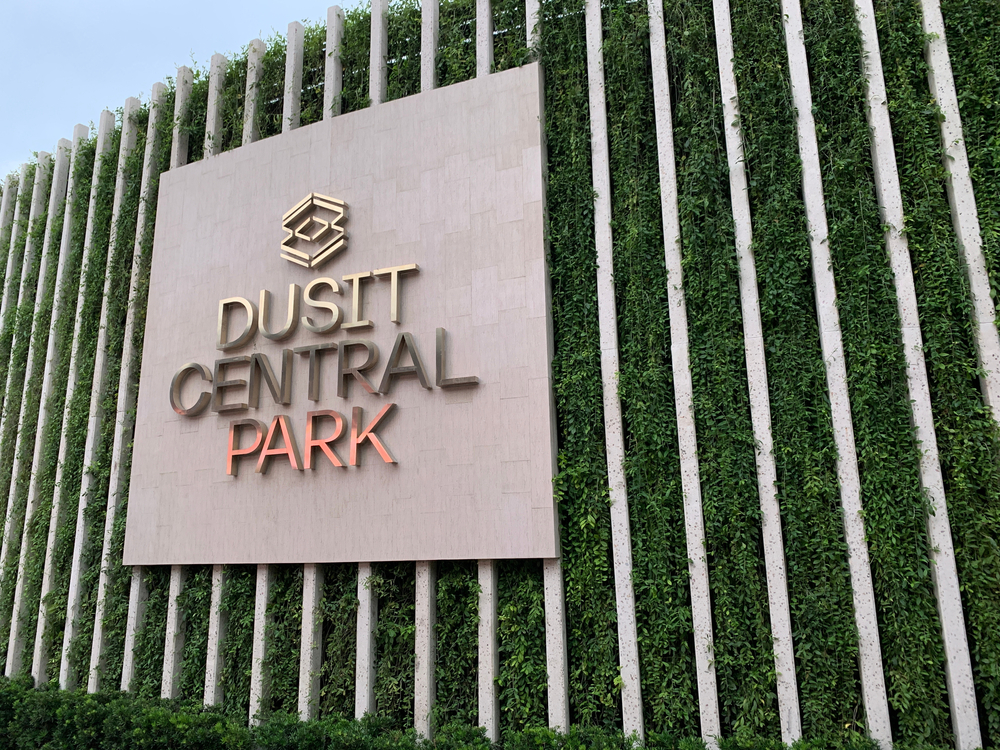Latest megaprojects set to change the face of Bangkok
Landmark developments along Bangkok’s Rama IV Road like One Bangkok and Dusit Central Park are upping the ante for real estate in Thailand’s capital

The reign of King Mongkut was a transformative one for Thailand.
The monarch ruled over his country for a relatively short time, his tenure lasting for just 17 years between 1851 and 1868. In that period, Siam—as it was then known—was increasingly feeling the pressure of western expansionism.
To bolster his country and prevent conflict with threatening colonial powers, he initiated modernisation in technology and culture.
Therefore it is appropriate that the artery bearing his posthumous name—Rama IV—has become synonymous with the breakneck evolution of Bangkok.
Thailand’s capital has never been one for standing still. All over the city, new real estate projects and infrastructure progress as rapidly as a speeding tuk-tuk driver on an empty soi. But the activity underway on Rama IV Road is remarkable even within this hyperactive context.
Linking upper Sukhumvit with Charoenkrung Road and Bangkok’s older quarters, the thoroughfare passes by historical and cultural landmarks such as Hualamphong Railway Station, Lumpini Park and Khlong Toei Market, the city’s biggest fresh market.
It’s the vast construction sites that pepper its flanks that are nurturing the future signatures in the Thai capital. Here, workers are grafting round the clock to bring two of the country’s most significant mixed-use real estate projects—One Bangkok and Dusit Central Park—to realisation.
“Rama IV Road makes the perfect alignment and direct interlink with main avenues in Bangkok,” says Marciano Birjmohun, director of the Singapore-Thai Chamber of Commerce and a member of the PropertyGuru Thailand Property Awards judging panel. “It, therefore, possesses one of the main criteria of mixed-used developments. And that’s connectivity.”
More: Live large in Malaysia’s next big resort destination
When One Bangkok opens at the junction of Witthayu Road and Rama IV, it will be the most expensive real estate project in Thai history. It will be the largest integrated development in Bangkok’s central business district with an investment value of over THB120 billion (exclusive of land cost). When fully completed, the project will include five premium grade A office towers, four distinct retail precincts, five luxury and lifestyle hotels and three luxury residential towers. Its 430-metre Signature Tower will be one of the 10 tallest buildings in Southeast Asia. A dedicated shared space for art and cultural activities and exhibitions will be part of the project.
“One Bangkok will reshape and redefine its urban landscape in a positive and lasting way as the largest private sector property development initiative undertaken in Thailand,” says Panote Sirivadhanabhakdi, group chief executive officer of Frasers Property Limited, the joint developer of One Bangkok. “Our ambition is to build sustainable developments that improve quality of life and are part of the fabric of the community. It is our goal to constantly create offerings that connect with their surroundings and become a global landmark that the community can be proud of. We believe One Bangkok is an offering worthy of what Thailand’s capital can deliver on the world stage.”

Smaller in scale but equally redolent with symbolism is Dusit Central Park. With a total construction area of over 400,000 square metres, the project is rising on the site of the iconic Dusit Thani hotel at the top of Silom Road, which was demolished to make way for its successor. It comprises a five-star hotel, luxury branded residences, grade A office space, and a major shopping mall, all connected by the verdant 11,200-sqm Roof Park, which will become one of Bangkok’s most dramatic attractions.
“Dusit Thani Bangkok was created as a landmark hotel, and over its 50-year history it welcomed royalty, world leaders, and celebrities from around the globe,” says Suphajee Suthumpun, Dusit International group CEO. “Dusit Central Park marks the next chapter in the story of this Thai icon and the project is a historic one not just for the company, but for the whole of Bangkok. Our location is the ‘super-core CBD’ of a major global city. When such areas are developed, they become iconic urban projects that define their destination and represent their community. It is a great responsibility for which we are deeply honoured and proud.”
While Rama IV Road is in the spotlight, it is far from the only location in Bangkok that is undergoing dramatic change due to mixed-use development. To the north of Lumpini Park, Sindhorn Village offers luxury residences and hotels such as Kimpton Maa-Lai and Sindhorn Kempinski, and a retail and leisure precinct called Velaa. On the city’s outskirts, meanwhile, the Forestias by developer MQDC covers an area of 64 hectares, nearly one and a half times the size of the world’s smallest country, The Vatican. A 16-kilometre elevated walkway will pass over the centrepiece, a 4.8-hectare wooded area.
More: A green office building blossoms in Cebu
A well-executed mixed-use development essentially creates its internal ecosystem, in which each of the various components benefits from its proximity to the others. An upscale shopping centre is more likely to prosper if placed within easy walking distance of luxury condominiums and hotel rooms designed to harbour affluent clientele.
Thailand analysts say that developers and investors alike are aware which way the wind is blowing.
“The benefits of mixed-use development extend far beyond enhancing the social good,” adds Birjmohun. “All over the globe, mixed-use developments are rising. Changing demographics and an evolving real estate market create demand for high-quality, integrated, and walkable communities. Mixed-use developments add more value to stakeholders. They represent the future of our communities, not just in Bangkok, but everywhere.
The original version of this article appeared in Issue No. 172 of PropertyGuru Property Report Magazine. Write to our editors at [email protected].
Recommended
Why everyone is moving to Selangor and Johor: Malaysia’s real estate comeback
Malaysia’s upturn in fortunes is especially prevalent in secondary destinations such as Selangor and Johor
Penang’s silicon boom: How the US-China tech war is supercharging local real estate
Penang’s booming semiconductor industry has created ripples within the local real estate sector
New leader, new opportunities: How Hun Manet is shaking up Cambodia’s real estate game
Hun Manet is overseeing decent economic growth and widening access to the country’s real estate market for foreigners
Singapore embraces inclusive housing reforms amid resilient demand
The Lion City’s regulatory strength continues to exert appeal for international investors








